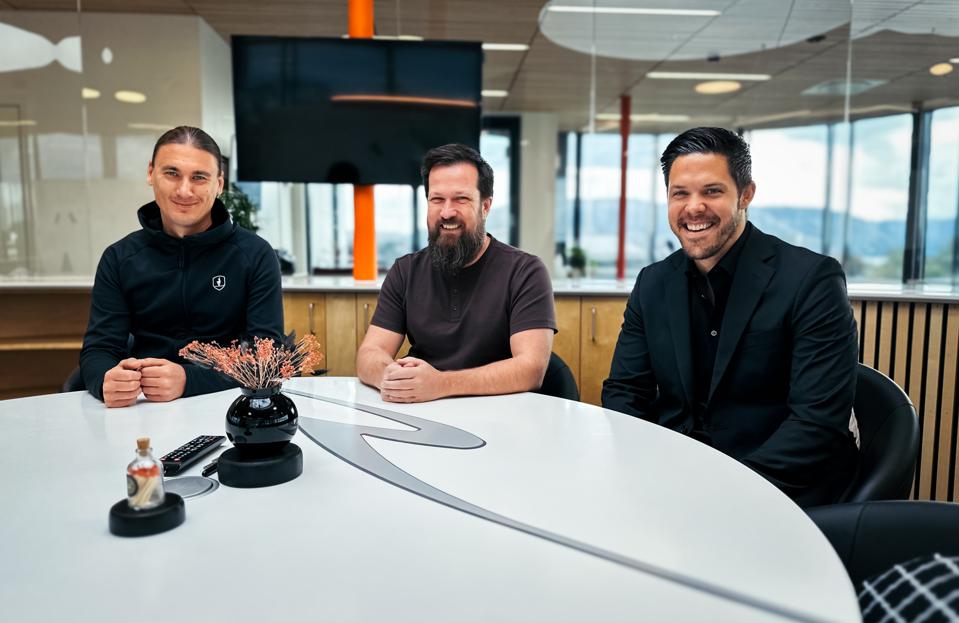The world’s energy transition could begin at home by “reimagining” how we live with energy, according to the boss of a Norwegian startup that is designing a home energy system that brings together solar, battery storage, EV charging, and energy management into one seamless digital platform.
Meet Jonas Helmikstøl, CEO and founder of Stavanger, Norway-based Starflow who believes his firm’s Energy Hub platform will become the ultimate “enabler for an optimized home.”
In the energy transition era, solar panels are increasingly finding favor with end-consumers. But solar panels and batteries use direct current (DC), while homes run on alternating current (AC). Inverters help with the conversion between the two.
“However, today’s models are mostly standalone, clunky, inflexible, mass-produced and non-digital, even if the console appears otherwise. We are taking a different approach – by treating the inverter not as a commodity, but as the foundation of a seamless home energy experience that’s fit, fun and cool,” Helmikstøl said.
In 2023, Helmikstøl and fellow Starflow co-founders Ola Stengel (chief technology officer) and Nikolai Konopelko (principal electronics engineer), noticed that residential solar panels had become cost competitive, batteries relatively cheaper, electronic vehicle chargers a part of people’s lives, and that more and more things run on DC.
“That got us thinking that while we cannot build a completely new grid, we can certainly rethink everything from platforms and processes in the new landscape but stay connected to reality.
“Born out of that way of thinking is our Energy Hub platform that will bridge the gap between the old grid and the new technology seamlessly, harmonize the chaos and make it the digital heart of a home.”
Harmonize The Chaos
Of course, the concept of a home hub console is not new and neither are home inverters. Helmikstøl said the unique selling point of Starflow’s platform is the “sophisticated integration” of the two encapsulated in a lightweight and modular kit.
“Additionally, the Energy Hub will serve as a medium to return surplus power to the grid. It will also have internet of things premised connectivity, an energy app store, and an efficiency and fault monitoring system that will constantly provide consumption data to the user, identify any potential faults and even book a callout engineer, if and when needed.”
Quite like the iPhone enabled an ecosystem of apps for Apple, Starflow will be opening its system to developers, energy providers, and smart home innovators.
With secure APIs [“Application Programming Interfaces”] and a design-led SDK [“Software Development Kit”], third parties will be able to build services that could potentially live natively and securely inside the Starflow experience, Helmikstøl claimed.
The hope is that these aspects would make the Energy Hub more intuitive, user friendly, relatable and reduce costs.
“And make it ‘super obvious’ to use clean energy where possible because sustainability solutions need not be a compromise. It’s not about sacrifice but seduction. To cap it all off, our product would be visually appealing,” Helmikstøl added.
Seducing Funders And People
Starflow’s platform, and its seduction tactics are winning people over during a critical pilot testing phase. In September, the startup bagged $5 million in seed funding. The round was led by Contrarian Ventures, with participation from Skyfall Ventures, Sondo, and select early-stage backers.
It came less than a year after Starflow’s pre-seed raise of $2 million was spearheaded by angel investor Trond Riiber Knudsen. He’s often considered one of Norway’s most prolific early stage technology backer with a portfolio of some 80-odd companies through his TRK Group.
On October 2, Starflow was also awarded a $2.5 million green grant from Innovation Norway, a state-owned company and a development bank. As the ranks of its funders rise, the company is cautiously expanding.
Helmikstøl, Stengel and Konopelko are busy expanding the team past double figures with a creative hub at Starflow’s Stavanger headquarters and a commercial office in Oslo. Both Helmikstøl and Stengel have known each other for nearly 15 years, and Konopelko for a couple of years.
The trio previously worked together at EV charging startup Easee, where they shared both “the good as well as tough times”, and know each others’ strengths, weaknesses and approaches to complex issues.
“We under no illusion of the magnitude of the task and hard slog ahead, and nor are our investors who believe in patient capital investment. But attempting to change the way we do things is neither easy nor straightforward. We are confident in our product offer, its potential scalability and our company’s future.”
Coming Soon To A Home Near You
Discussing the near-term horizon, Helmikstøl said Starflow will be spending the next two to three years testing and validating the Energy Hub platform. “As part of the process, we will conduct pilots in 2026 starting with five homes. This will eventually rise to 25 homes.”
Thereafter, in 2027, so assuming the pilot phase is successful, Starflow will gradually start commercially upscaling and may consider a public listing on the Oslo Stock Exchange.
“We have a very realistic target of at least 100,000 systems installations Europe-wide by the end of the decade and be a part of the continent’s energy transition. By 2035, my hope is that we’d have become a recognizable European energy solutions vendor, and within the next five to seven years make Energy Hub the standard home hub platform, at least in new homes.”

